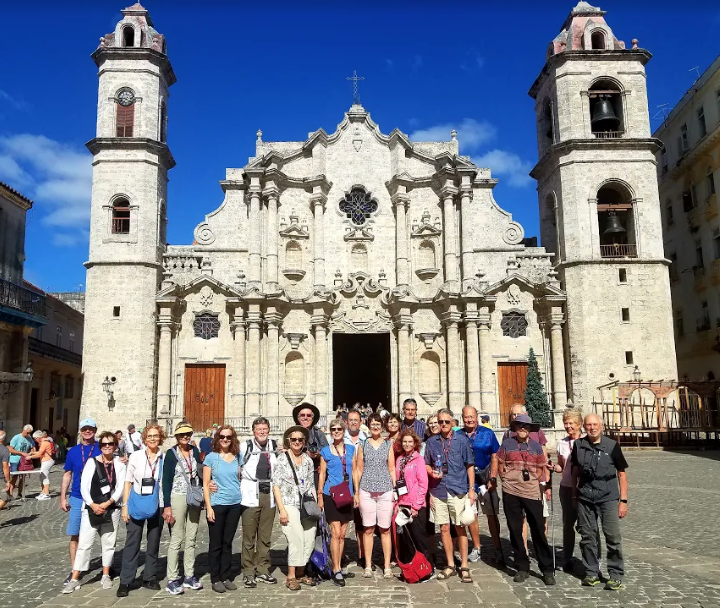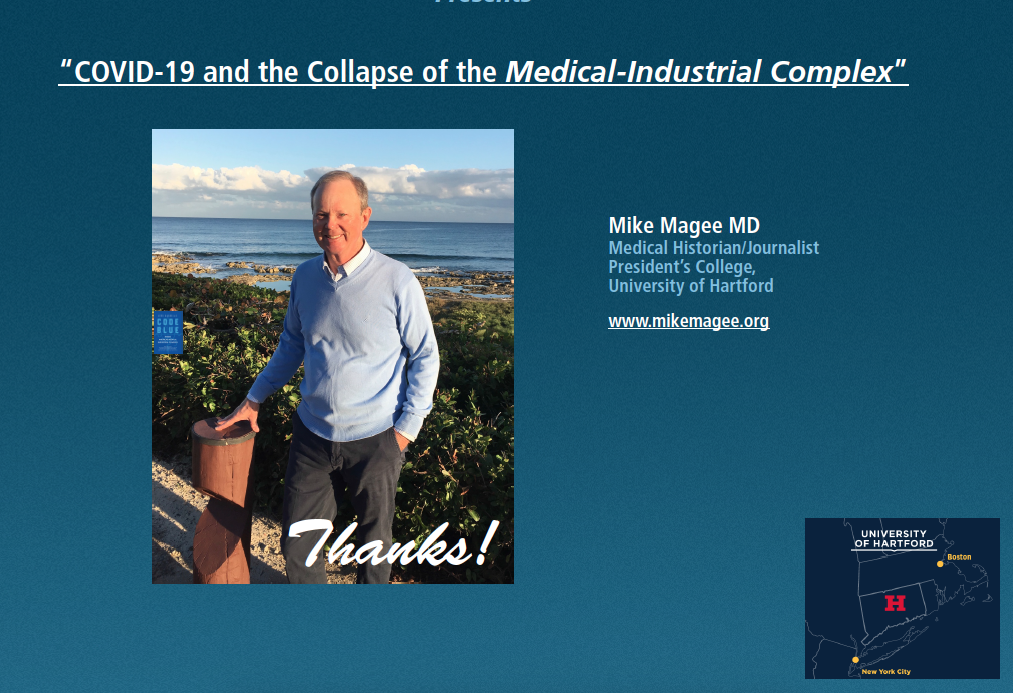A Reminder to Coca-Cola & PepsiCo – Black Lives Matter.
Posted on | June 25, 2020 | 1 Comment

Mike Magee
Across America, we are experiencing an awakening to our unrelenting racial biases and prejudicies. These are expressed in a culture that is unforgiving, violent, and at times deadly.
Death, as we’ve seen can come at the hands (and knees) of police; by inequalities in education, safety, and economic opportunity; or by poor health, whether by lack of access to care or targeted predatory advertising of minority communities.
A few years back Coca-Cola and PepsiCo promised to advance low-sugar beverage alternatives. At the very same time, they ramped up advertising of high calorie sodas to youth and minorities.
Fresh evidence of these behaviors was laid bare in a report last week from the Rudd Center for Food Policy & Obesity at the University of Connecticut.
· Compared to white children and teens, Black children saw 2.1 times as many sugary drink ads and Black teens saw 2.3 times as many. Black youth exposure was particularly high for sports drinks, regular soda, and energy drinks.
· In 2018, companies spent $84 million to advertise regular soda, sports drinks, and energy drinks on Spanish-language TV, an increase of 8% versus 2013 and 80% versus 2010.
· Sports drink brands disproportionately advertised on Spanish-language TV, dedicating 21% of their TV advertising budgets to Spanish-language TV, compared to 10% on average for all sugary drinks.
· From 2013 to 2018, teens’ exposure to TV advertising increased for regular soda/soda brands (+1%) and iced tea (+68%), despite a 52% decline in time spent watching TV during the same time. Energy drinks and sports drinks targeted their TV advertising directly to teens, as evidenced by high ratios of ads viewed by teens versus adults.
· Preschoolers’ saw 26% more TV ads for sugary drinks in 2018 than in 2013, and children’s ad exposure increased by 8%. These increases occurred despite a 35% decline in average TV viewing times for preschoolers and a 42% decline for children during the same period.
· PepsiCo and Coca-Cola were responsible for 38% and 31% of all sugary drink advertising spending, respectively. PepsiCo sugary drink advertising spending increased by 28% from 2013 to 2018; Coca-Cola sugary drink advertising increased by 81% during that time period.
· Four brands each spent more than $100 million to advertise sugary drinks in 2018: Coke, Pepsi, Gatorade, and Mtn Dew.
In this day and age, as we confront our past, and the injuries we have imposed and condoned on a large number of our citizens, we can no longer turn a blind eye to corporations in America. If they signal through their predatory advertising that “Black Lives don’t Matter”, they do not deserve our support.
The Drip, Drip, Drip of Change.
Posted on | June 17, 2020 | 3 Comments

Mike Magee
If you look in the Guiness Book of Records, you will discover that the record for the world’s longest running laboratory experiment is held by the Pitch Drop Experiment at the University of Queensland in Brisbane, Australia. The experiment was begun in 1927 by physics professor Thomas Parnell who wished to demonstrate how viscous a liquid could be and still be “liquid”.
Dr. Parnell poured hot tar pitch into a glass vessel and let it cool for three years. He then cut open the funnel shaped bottom of the vessel and allowed the tar to flow.
Demonstrating that patience truly is a virtue when it comes to observational science, the first drop fell eight years later. Since then, eight drops have fallen, roughly one drop per decade. This has allowed physicists to calculate the viscosity of this black goo to be 230 billion times the viscosity of water.
Over the years, many individuals have reflected on the lessons learned from this experiment. For example, “change does occur, but often at its own pace” or “what will happen next is easier to predict than when it will happen” or ” there is only “time before and time after.”
Professor John Mainstone, who helped oversee the experiment for half a century, commented in 2012 that, “It is only when the drop has happened that what has gone before makes sense in the flow of time. That is I don’t become aware of what was going on just before the drop until after the drop occurs.”
These drops were large, accumulating mass over time. And their relative infrequency added to their dramatic effect. But what of a constant flow is smaller, more viscous, more ordinary droplets? Do they create a “before” and “after” reality change. Or do they simply cause a series of relatively non -transparent counter-droplets designed to re-establish the status-quo?
For roughly the same amount of time as the Pitch Drop Experiment has existed, modern health care delivery in the United States has conducted its own experiment. I captured many of the major milestones in “Code Blue: Inside the Medical Industrial Complex.”
The most recent “drops” include Medicare Part D passes; PDUFA reauthorization means industry funds 20% of the FDA budget; Patient Protection and Affordable Care Act passes and states mount legal challenges; Trump undermines federal health preparedness; Covid-19 pandemic exposes the weaknesses of a profit-driven, employer based health care system in America; Black Lives Matter shines a light on racial prejudice and massive inequities in policing, health care, education, and housing in America.
Time and effect of single drops are hard to predict. Drops of cruelty, discrimination, inequity and greed have gone largely unnoticed, dispatched and buried for many years.
Then a knee to one man’s throat on May 25, 2020 dropped with resounding effect. It has clearly marked a “before.” It remains to be seen whether it will finally mark an “after” for our beleaguered society
Celebrate The Goodness In Humans.
Posted on | June 11, 2020 | 1 Comment

Mike Magee
“Good news in today’s world is like a fugitive, treated like a hoodlum and put on the run. Castigated. All we see is good-for-nothing news. And we have to thank the media industry for that. It stirs people up. Gossip and dirty laundry. Dark news that depresses and horrifies you. On the other hand, gospel news is exemplary. It can give you courage. You can pace your life accordingly, or try to, anyway. And you can do it with honor and principles. ” Bob Dylan/2020
When our world was in turmoil 50 years ago, a guiding voice back to sanity was that of Robert Allen Zimmerman of Duluth, Minnesota. A year away from age 80, he has mercifully appeared again in a nation’s moment of need. With our nation plagued by the same chronic issues – greed, avarice, hatred, racism, depression – Bob Dylan releases his new album, Rough and Rowdy, and granted a timely interview to Douglas Brinkley, including the excerpt above from the New York Times.
Failed leadership, an unprecedented pandemic, and breaking-point racial injustice are challenging Americans’ resilience and undermining mental health. Behavioral scientists are busy measuring the psychological toll and offering tips on how best to cope.
One suggestion that honors Dylan’s quest for “honor and principles” is to search your recent past for a concrete story or two that spotlights the best of humanity, and retell these stories to others. Here are two that surfaced for me this week.

1. Bernell Grier:
In viewing “The Biggest Psychological Experiment In History Is Running Now” in this week’s Scientific American, the banner photograph above of a masked woman looked familiar. Sure enough, I did know her. I hadn’t seen Bernell Grier for twenty years. She and I were part of the 2000 class of the David Rockefeller Fellowship, a leadership training program supported by the New York City Partnership. Two qualities stood out back then about Bernell – commitment and joyfulness. At the time, she headed a community banking initiative focused on assisting at-risk communities. A perpetual smile and laugh-tinged hopefulness was the leading edge of this enlightened realist and pragmatist. I admired her greatly.
Twenty years later Bernell serves as executive director of IMPACCT Brooklyn which serves historically black neighborhoods of Brooklyn. Covid has made her job harder. As she says, “Seniors are fearful of going out, fearful of anyone coming to their front door. They also are not tech-savvy…they need someone to hold their hand and help them through the process…This is a spotlight on what has existed for too long. When you’re looking at [solutions], make sure that income equality and a racial-equity lens is a filter for everything that’s put in place.”

2. Cuban Dominoes:
In January, 2020, we spent 11 days in Cuba with the Road Scholars. During the trip, Trump announced new restrictions on travel to the island, adding to the prior year’s elimination of cruise ships and flights to all cities except Havana which shaved nearly 10% off tourism. The day of this latest offensive, a Cuban professor, Javier Dominguez, gave us a lecture on the Cuban American relationship over the past century. In closing, he mentioned that Martin Luther King was his hero and cited the “I Have A Dream” speech. His version that day:
“I dream of the day my grandsons and your grandsons can travel to Cuba freely and play baseball together in a peace and love environment. I dream of the day when there is no blockade on the Cuban people, and Americans and Cubans can travel to Cuba and to USA without restrictions. I dream of the day when there will be a big bridge of love between our two peoples. I dream of the day when the light of love and friendship illuminates the sky that covers our two peoples. I dream of the day when violence disappears in the lives of our beloved sisters and brothers of the USA. I dream of the day when my people don’t suffer from shortages because of injustice and blockades. Yes, today I have a dream. God bless you.”

One other lasting memory was the opportunity to be taught Double Nine Cuban Dominoes by two aging Cubans, committed to the game and members of a community based club. We were so taken by the game that we ordered this professional set and taught the game to our grandchildren. In addition to introducing them to the rules, and the terms (tiles, pips, graveyard), I searched for a picture of “Cubans playing dominoes” to print to show them.

The first image that popped up was one of President Obama in Cuba engaging in the national pastime the month he green lighted flights to the island. Hopefully, following the November election, they will resume.
These are difficult times. They demand resilience, strength, determination, and hopefulness. Celebrating decent human beings in your own life can help. Have a listen to Dylan’s new work HERE. And consider sharing your “good news” here. Comments welcomed.
Restoring faith in the American project and reseeding common ground. Can We Do It Again?
Posted on | June 4, 2020 | 7 Comments

Mike Magee
This is all too familiar. Criminal leadership at the top. Rampant injustice at home and abroard. Young leadership, with parents and grandparents in tow, erupting in the streets across our nation – courageous, frustrated, demanding better, not willing to take it anymore.
For people of my age, here we are again, 50 years later.
In place of Nixon, Vietnam, and rank injustice, we now face Trump, Covid-19, and rank injustice.
In bracing ourselves for what must happen next, it is useful to recall Sen. Sam Ervin’s words, delivered in 1974, at the end of a 20-year Senate career in response to a self-posed question “What was Watergate?” His response is worth absorbing in all its fullness. It was “a lust for political power that blinded them to ethical considerations and legal requirements.”
In reviewing a 2012 retrospective of Watergate written by Washington Post reporters Carl Bernstein and Bob Woodward, it becomes obvious that Trump and Bill Barr have been following the Nixon playbook carefully, and are far along in executing their plan.
The famous reporters could as easily be describing Trump as Nixon when they wrote, “…he is heard talking almost endlessly about what would be good for him, his place in history and, above all, his grudges, animosities and schemes for revenge. The dog that never seems to bark is any discussion of what is good and necessary for the well-being of the nation…Nixon had turned his White House, to a remarkable extent, into a criminal enterprise.”
Nixon’s five-front war has modern parallels to Trump’s assault on America ideals at every turn.
- The war on the anti-war movement then, is a war on “Black Lives Matter” now.
- Nixon’s war on the media, enshrined in John Erlichman and Pat Buchanan’s “Plumbers” unit, is Brad Parscale’s full throated “Fake News” campaign.
- Nixon’s war against the Democrats, fueled by intelligence and surveillance from a slumped over and criminal appearing John Mitchell, presages accurately the modern day sulking and gloating Bill Barr.
- Nixon’s war on Justice, directed by H.R. Haldeman, included directives from Nixon that could be transferred word for word to a conversation between Trump and Barr. Nixon is heard on tape directing, “Play it tough. That’s the way they play it, and that’s the way we’re going to play it.”
- Nixon’s war on history predicts Trump’s final years of life – filled with disgrace, isolation, and endless attempts to alter the facts. We think of Trump as a world-class liar, in a league of his own. But consider this: In his 1990 book, “In The Arena,” published four years before his death in 1994, he denies paying hush money to the Watergate burglars. And yet, on the March 21, 1973 tape of he and John Dean, he orders Dean to get the money and deliver the payments 12 times.
Will history repeat? The final moves remain to be played. When Sen. Barry Goldwater delivered his “Too many lies, too many crimes”, message reinforcing that Impeachment was assured, Nixon folded. Trump didn’t care, knowing that, with McConnell’s wife in the cabinet, and the majority and lifetime judicial appointments in play, Mitch would backstop the threat.
Likely Trump believes his and McConnell’s Supreme Court appointees will provide similar protection, say – for example – when he turns our military on its own citizens. And while that history remains to be written, we should recall that on July 24, 1974, it was the Supreme Court – with Nixon appointees Chief Justice Warren E. Burger, Justice Harry Blackmun and Justice Lewis Powell – that ruled 8 to 0 that their President would have to turn over the tapes to the Watergate special prosecutor.
We Cannot Afford Leaders Who Lie.
Posted on | May 30, 2020 | 1 Comment

Mike Magee
In the re-build of Germany and Japan under the Marshall Plan, we elected to start with a health plan – in part because we recognized that all other social determinants – justice, housing, nutrition, education, clean air and water, transportation, safety and security – would be enhanced in the process. We understood that this 1948 infusion of what would today amount to $128 billion would engender trust, improve health and productivity, and process fear and worry which might otherwise undermine the establishment of a civil society and stable democracy.
This is essentially the same challenge we as a country (having wandered so far off course as to elect Trump) are faced with today as we battle the dual scourges of a badly mismanaged pandemic response and the fires of historic and systemic racism.
Changing culture is a tall order. It is about compassion, understanding and partnerships. It is about healing, providing health, and keeping individuals, families and communities whole. And – most importantly – it is about managing population-wide fear, worry and anxiety, made all the worse by inequality and injustice at every turn.
What we are asking of the people, and the people caring for the people, is to change their historic culture (one built on prejudice, violence, self-interest, hyper-competitiveness, and distrust of good government). This is a tall order – something that parents, pastors, politicians and physicians equally recognize.
Things evolve, and difficult things take time. But what happens if you run out of time, if the threats of delay or incrementalism create risks that outweigh or negate rewards? What if you chose the wrong President, the wrong police chief, the wrong prosecutor? What then?
What happens then is that the choices become quite stark – self-determination or self-destruction. Health reform offers a way back toward sanity. It offers our citizens the opportunity to embrace compassion, understanding and partnership as core pillars of a just society.
If we choose to go this route however, the mischief-makers who spent a decade undermining the Affordable Care Act must be effectively sidelined from the start. At the same time, we must disabuse ourselves of any notion that a cultural shift with health care as the leading edge will be simple or easy.
What we witnessed this past week in Minneapolis-St. Paul was a grim reminder of how deeply seeded racism and injustice are planted in America, and how far protectors of the status quo are willing to go to maintain their dominance. An epic struggle unleashed by our President and his political enablers threatens to engulf us all, awakening unpleasant flashbacks of 1968 and a country at war with itself. It is not a pretty picture.
But history instructs. In 1934, W.E.B. Du Bois, the first African American to receive a PhD from Harvard wrote, “Nations reel and stagger on their way. They make hideous mistakes; they commit frightful wrongs; they do great and beautiful things. And shall we not best guide humanity by telling the truth about all this, so far as the truth be ascertainable?”
We cannot afford leaders who lie.
So it is useful to acknowledge what our former military leaders stated as Germany and Japan sought to rise from the ashes. “We start with health care because it is an anecdote to fear, worry, and hatred.” As our vanquished enemies did, we start anew.
What Is The Next Shoe To Drop?
Posted on | May 27, 2020 | 1 Comment

Mike Magee
As Americans haltingly reemerge through the smoldering embers of the Covid-19 blaze, many wonder, “What will be the next shoe to drop?”
Most realize this crisis is far from over. Erratic leadership at the top will be with us at least until the November election. And even with a successful defeat of President Trump, the virus will likely give as good as it gets for at least another 12 to 18 months until a vaccine appears. Economic hardship and displacement will take years more to resolve.
But even now, we are forced to remind ourselves that there are other threats and concerns that demand our attention. To begin with, infectious diseases are only half of our dual disease burden. Chronic diseases from cardiovascular to neurodegenerative to cancer and beyond have not suddenly disappeared. They remain in force, demanding our attention, and taxing our broken health delivery system.
The same kind of misguided policies that created our health care system have also spawned other vulnerabilities. Take for example the recent drama in Sanford, Michigan. On May 21, 2020, the century-old Edenville Dam, stressed by nearly 4 inches of rain, gave way, but not without warning. It was one of over 2000 dams that were deemed by the Association of State Dam Safety Officers to earn an “F”- high-safety threat rating. (95,000 dams earned a slightly better D.)
Global warming has clearly played a role. The last four years have been among the 15 wettest in Michigan’s recorded history. 75% of the earthen dams in the U.S. are privately owned and have an average age of 56 years. They were mostly built to drive mills and generate modest amounts of electricity. Today, most generate no revenue, and repairs go unfunded.
In the case of the Edenville Dam, it is owned by Boyce Hydro Power whose license was revoked by the Federal Energy Regulatory Commission in 2018 for failure to make necessary repairs the company says would have cost 8 million dollars. They say that residential home-owners on the lake created behind the dam share the blame. They went to court to block the company from protectively lowering the lake level for extra security against sudden downpour. They thought it would ruin the view. Those same lakeside residents now look out on a mudflat.
Dams are emblematic of a wide range of neglected infrastructure problems that demand “good government” responses rather than “a thousand points of light” or “beautiful walls.”
In so many ways, the rent has come due. What all Americans need to realize is that a decisive rejection of this administration in November is only the first step. As important will be what follows – the establishment of “good government” driven by national policy that can efficiently deliver strategic planning, prioritization, budgeting, and execution on a national and equitable scale.
Tags: aging infrastructure > COVID-19 > dual burden of disease > health reform > trump > unsafe dams
Covid-19 and The Collapse of the Medical Industrial Complex: Imagining a Brighter Future.
Posted on | May 23, 2020 | 2 Comments

To our surprise, this online lecture explaining the birth of the Medical-Industrial Complex in America, and how it planted the seeds for the current pandemic disaster, maxed out its Zoom capacity within minutes of its offering. That left many of you in the lurch, and for this, we apologize.
But the good news is, we did a real time recording of Dr. Magee’s presentation, and offer it here to you open access, without charge.
As together we mourn all those we have lost, we encourage you to share this presentation with family, friends and colleagues this Memorial Day as together we pursue a brighter future.
Access the Slide Lecture HERE.
Tags: Code Blue > COVID-19 > MedicalIndustrial Complex > MIC > online lecture


